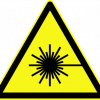Modelling water using ARCHER
Interview with
What kind of science does the new breed of supercomputers get used for? This week  the UKs Engineering and Physical Sciences Reserach Council will announce the launch in Edinburgh of a new 43 Million pound supercomputer called ARCHER - Academic Research Computing High End Resource - capable of more than one million billion calculations a second. Dave Ansell was joined by Jason Reese from Edinburgh University who uses supercomputers for his research...
the UKs Engineering and Physical Sciences Reserach Council will announce the launch in Edinburgh of a new 43 Million pound supercomputer called ARCHER - Academic Research Computing High End Resource - capable of more than one million billion calculations a second. Dave Ansell was joined by Jason Reese from Edinburgh University who uses supercomputers for his research...
Dave - So Jason, what do you use these supercomputers for?
Jason - We use supercomputers for doing engineering simulations. There are 3 ways in which supercomputers are very good for doing these kind of simulations. First, with a supercomputer, you can divide a very big simulation into a number of smaller simulation packets and solve these simultaneously. Second, you can solve many individual problems at the same time. And third, many people can use a supercomputer at once and you can access it remotely. So, if you want to be on the beach in the Caribbean and you've got an internet access or wifi access, you can access these computers.
Dave - Sounds like a good life.
Jason - So, we use these supercomputers in each of those 3 ways. The work that we're doing at the moment is with Duncan Lockerby in Warwick University and David Emerson in Daresbury Lab, and it's funded by the Engineering and Physical Sciences Research Council in the UK. What we're using these supercomputers for is to design new types of filtration membranes to separate pure water from seawater.
Dave - So, this would be ways of getting freshwater if you're in the middle of the dessert but you got the sea next door to you.
Jason - Absolutely. It's the real challenge in engineering at the moment because drinking water is already scarce for more than a billion people around the world and it's probably going to become worse through climate change.
Dave - So, how are you actually trying to do this?
Jason - Our work exploits the fact that fluid dynamics, the way that fluids flow in and around systems changes when you get to the nanoscale, so that's 10 to the -9 of a meter. If you make up filtration membranes of aligned nanotubes and nanotubes, for example carbon nanotubes are rolled up sheets of graphene, but very small diameter, about 1 nanometre in fact in diameter. Water can travel along the nanotubes very quickly, but the sodium and the chloride ions can't travel into the nanotubes because they've got a hydration shell of water molecules around them. So, what this means is if you have a membrane and it's comprised of aligned nanotubes and it could be carbon nanotubes or boron-nitride or silicon-carbide nanotubes. The water will be able to pass through it, but the sodium and the chloride ions wont.
Dave - I guess you didn't need a supercomputer to work out that this might work. Why aren't you just actually going out there and making stuff? Why are you putting it all on a big computer?
Jason - Well, the great thing about supercomputers and computers in general is that you can run simulations for design. So, one of the big questions is, what kind of nanotubes, how would you align them in the membrane, how long should they be, what is the optimum diameter of the nanotubes? And also, before you go and build something, you often want to have a prediction as to how effective it's going to be.
Dave - In your computer, you've got some representation of these little nanotubes. So, are you modelling just how they behave with water or also, how you actually make them because I imagine making a forest of these nanotubes isn't necessarily trivial?
Jason - Making them is a different question, that's right. You often make carbon nanotubes, and they've all got sort of different diameters, and you probably want to separate out the ones that work well in filtration membranes and the ones that don't. The real challenge for the simulations and why you can't do this on your desktop machine is that the water behaves as a molecular substance. If you're going to design a ship or if you're going to design an aeroplant, or even just water flowing in a water mains pipe then you can standard equations of fluid dynamics. But all of those, you have to start questioning and in many cases throw out the window, when you're talking about nanotubes and nanoscale flows because you have to model the individual molecules. So, the reason we use a supercomputer is because we're simulating million or hundreds of thousands or millions of molecules at a time. Each of them interact with each of the other molecules in the simulation and we have to run the simulation for a reasonable amount of time, so we can get the steady state flow properties of these membranes.
Dave - How much computer time are you actually using on this problem?
Jason - Well last year, we used 1 million CPU hours for these simulations. That works out about 140 years of computer time.
Dave - So, what's the next step?
Jason - This is exactly why we are doing the simulations. We've started identifying the best types of nanotubes, the best types of solid molecules for the membranes. Now, we're working with our partners at Bath University, to start testing these. There's been a lot of interest in fluid flows at the nanoscale recently because fluid behaves very differently to what it does around larger scale objects. So, this is just one of the applications of nanoscale fluid dynamics that we're looking at at the moment.
- Previous Why are some people left handed?
- Next Mira the supercomputer





Comments
Add a comment